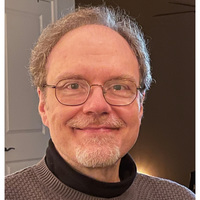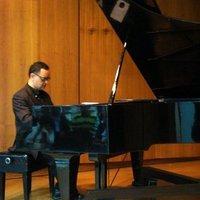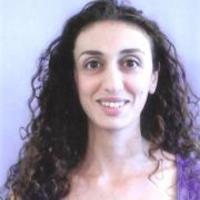
Sam Barrett
Sam Barrett is Professor of Early Medieval Music, and Fellow and Director of Study in Music at Pembroke College. He is a specialist in early medieval music, with a particular interest in Latin song and issues in notation, transmission and performance. He also has interests in jazz and related genres of popular music.
Address: Pembroke College, Cambridge
Address: Pembroke College, Cambridge
less
Related Authors
David Carson Berry
University of Cincinnati
Katherine Butler Schofield
King's College London
Terry Gunnell
University of Iceland
David Seamon
Kansas State University
Juan Francisco Sans
Universidad Central de Venezuela
Egil Bakka
Norwegian University of Science and Technology
Armando Marques-Guedes
UNL - New University of Lisbon
Florin Curta
University of Florida
Paolo Divizia
Masaryk University
Aline gabay
Tel Aviv University
InterestsView All (24)









Uploads
Papers by Sam Barrett
theWest,” first published in 1982, Leo Treitler expanded upon the implications of his call for a shift from palaeographic to semiotic study of early notations. What was needed was a reorientation to consider who used notation, for what purpose, using what modes of representation, entailing what conception of musical objects, and on the basis of what sort of knowledge and competence. A possible focus for such inquiry was briefly mentioned, namely neumatic notations added to sources of classical poetry copied from the ninth to the twelfth century. The broad extent of these notations had been known since the pioneering codicological work undertaken by Birger Munk Olsen and Yves-Franc ois Riou, as reported in a series of publications beginning in the 1980s, which identified some ninety notated manuscripts. Renewed interest was sparked in the first decade of the new millennium by Jan Ziolkowski’s framing of questions about these notations as a philologist interested in the reception of classical texts. Inspired by Ziolkowski’s exploration of the cultural implications of notating classical verse, Treitler warned that future musical research in this area should not “leap to assimilate this phenomenon to the medieval song traditions of sequence,
versus, and conductus and restrict the study of it to the control of
the questions we are accustomed to raising about those traditions.”
Collaboration with members of the ensemble Sequentia over a four-year period (2014–17) provided an opportunity to explore ways in which creative practice might supplement scholarly knowledge, whether through posing new research questions, the formation and exploration of hypotheses, or recourse to memorized practices built up through sustained engagement with early medieval repertories and instruments. Taking a recovered mid eleventh-century leaf of the Cambridge Songs as a focus for investigation, songs from the first book of Boethius’s De consolatione philosophiae were newly reconstructed. Although debate continues to surround the status of results obtained through creative practice, comparison with the way other disciplines have proceeded under similar conditions reveals acceptance of experimentation as a mode of inquiry. This essay proposes that performance can fruitfully supplement philology in seeking to reconstruct lost songs from notated traces.
theWest,” first published in 1982, Leo Treitler expanded upon the implications of his call for a shift from palaeographic to semiotic study of early notations. What was needed was a reorientation to consider who used notation, for what purpose, using what modes of representation, entailing what conception of musical objects, and on the basis of what sort of knowledge and competence. A possible focus for such inquiry was briefly mentioned, namely neumatic notations added to sources of classical poetry copied from the ninth to the twelfth century. The broad extent of these notations had been known since the pioneering codicological work undertaken by Birger Munk Olsen and Yves-Franc ois Riou, as reported in a series of publications beginning in the 1980s, which identified some ninety notated manuscripts. Renewed interest was sparked in the first decade of the new millennium by Jan Ziolkowski’s framing of questions about these notations as a philologist interested in the reception of classical texts. Inspired by Ziolkowski’s exploration of the cultural implications of notating classical verse, Treitler warned that future musical research in this area should not “leap to assimilate this phenomenon to the medieval song traditions of sequence,
versus, and conductus and restrict the study of it to the control of
the questions we are accustomed to raising about those traditions.”
Collaboration with members of the ensemble Sequentia over a four-year period (2014–17) provided an opportunity to explore ways in which creative practice might supplement scholarly knowledge, whether through posing new research questions, the formation and exploration of hypotheses, or recourse to memorized practices built up through sustained engagement with early medieval repertories and instruments. Taking a recovered mid eleventh-century leaf of the Cambridge Songs as a focus for investigation, songs from the first book of Boethius’s De consolatione philosophiae were newly reconstructed. Although debate continues to surround the status of results obtained through creative practice, comparison with the way other disciplines have proceeded under similar conditions reveals acceptance of experimentation as a mode of inquiry. This essay proposes that performance can fruitfully supplement philology in seeking to reconstruct lost songs from notated traces.
🔗 https://bit.ly/3DimVPd
Il volume presenta l’edizione critica del ritmo mnemotecnico Anni Domini notantur basata su ventisei testimoni manoscritti e uno a stampa del 1612. L’edizione, provvista di traduzione, apparato critico negativo ed esplicitazione delle fonti, è preceduta da una breve storia del genere letterario e della sua funzione nel campo delle scienze computistiche, dalla descrizione di tutti i testimoni manoscritti, da un profilo ecdotico e dall’analisi metrica, musicale e contenutistica del componimento, con una approfondita annotazione degli elementi computistici.
Il lavoro fa parte del progetto «Corpus Rhythmorum Musicum (saec. IV-IX)», diretto da Francesco Stella, inteso allo studio e all’edizione dei ritmi mediolatini musicati dei secoli IV-IX. L’edizione sviluppa i risultati della tesi inedita di Chiara Savini, Il ritmo «Anni Domini notantur» nella tradizione computistica medievale, ampiamente verificati e integrati dalla curatrice Irene Volpi sulla base di un numero consistente di nuovi codici, ed è corredata dall’analisi della melodia conservata nel ms. BAV, Reg. lat. 1723, ad opera di Sam Barrett.
before the eleventh century are identified as primary material for research. In selecting for investigation both a topic (early medieval verse and music) and a medium (poetic collections), a twofold enquiry is pursued. First, potential uses and users of the surviving notations are assessed. This entails a consideration of notation as, on the one hand, one among several activities involved in the collection and presentation of verse on the page, and, on the other, a witness to the later reception of poetic collections. The particular selections and presentations of text and notation in the individual collections are accordingly analysed as written representations of early medieval music and verse with their own rationale and audience. Through this assessment of the writing
of individual manuscripts, a spectrum of uses for and users of the neumatic notations is proposed. Second, surviving notations are analysed as representations of sounding structures. Although the information provided by the neumatic notation cannot be
transcribed into a modern format, the information transmitted by the neumes is analyzed in conjunction with the poetic texts. Two forms of analysis are undertaken: a comparison of surviving notations for textual concordances, and a comparison of notations for similar text structures. On the basis of these analyses, characteristic melodic behaviours are identified and new models for the interaction of music and poetry proposed. The notations and texts for these analyses are presented separately in a second volume, which contains reproductions, transcriptions and commentaries of the thirty-nine poems in the six poetic collections, as well as reproductions and transcriptions of notations for concordant texts transmitted outside these collections.